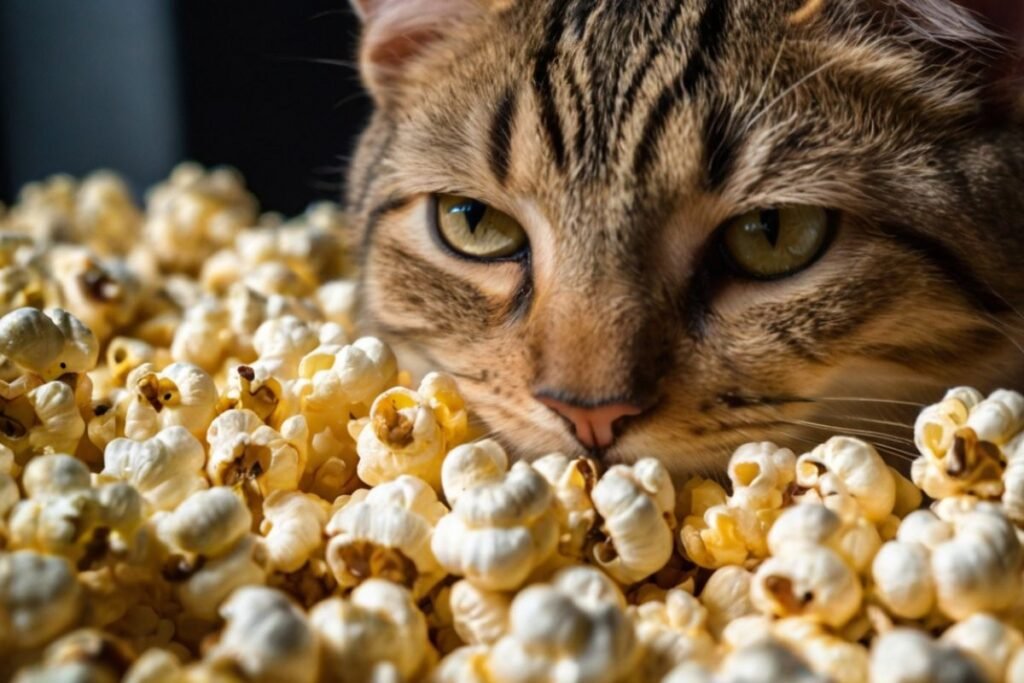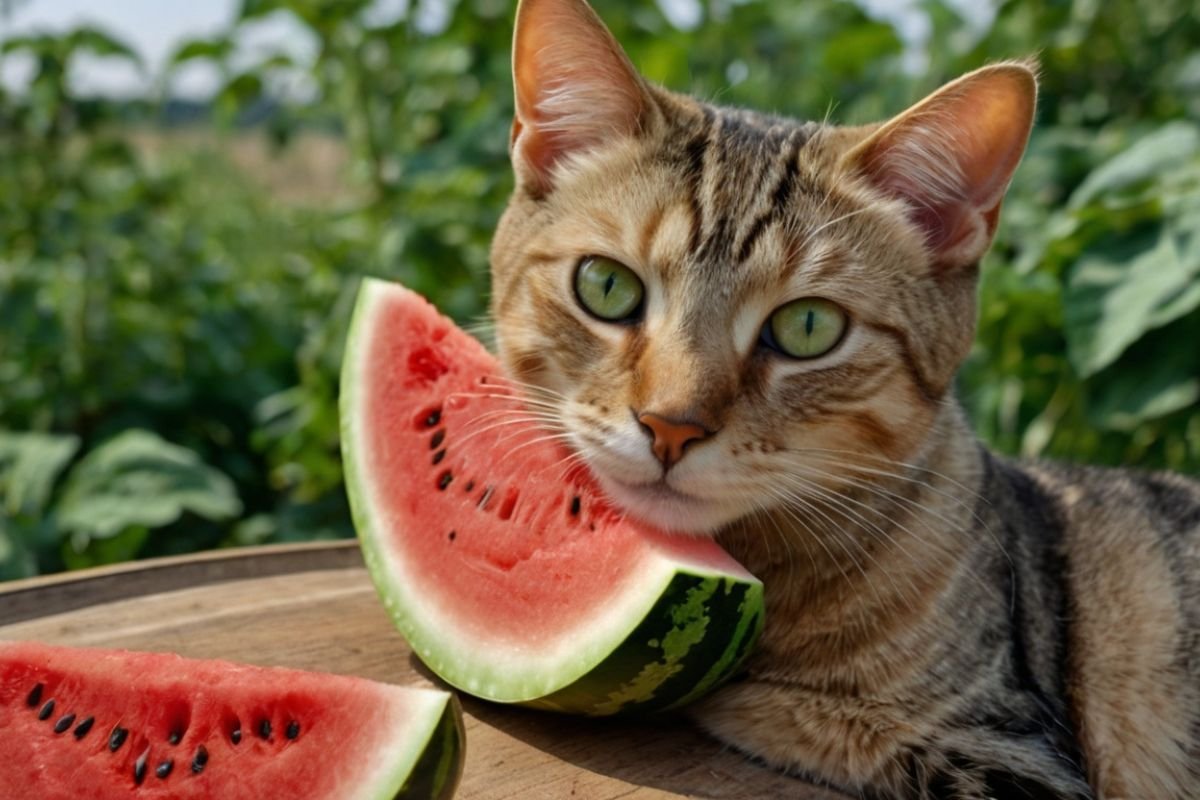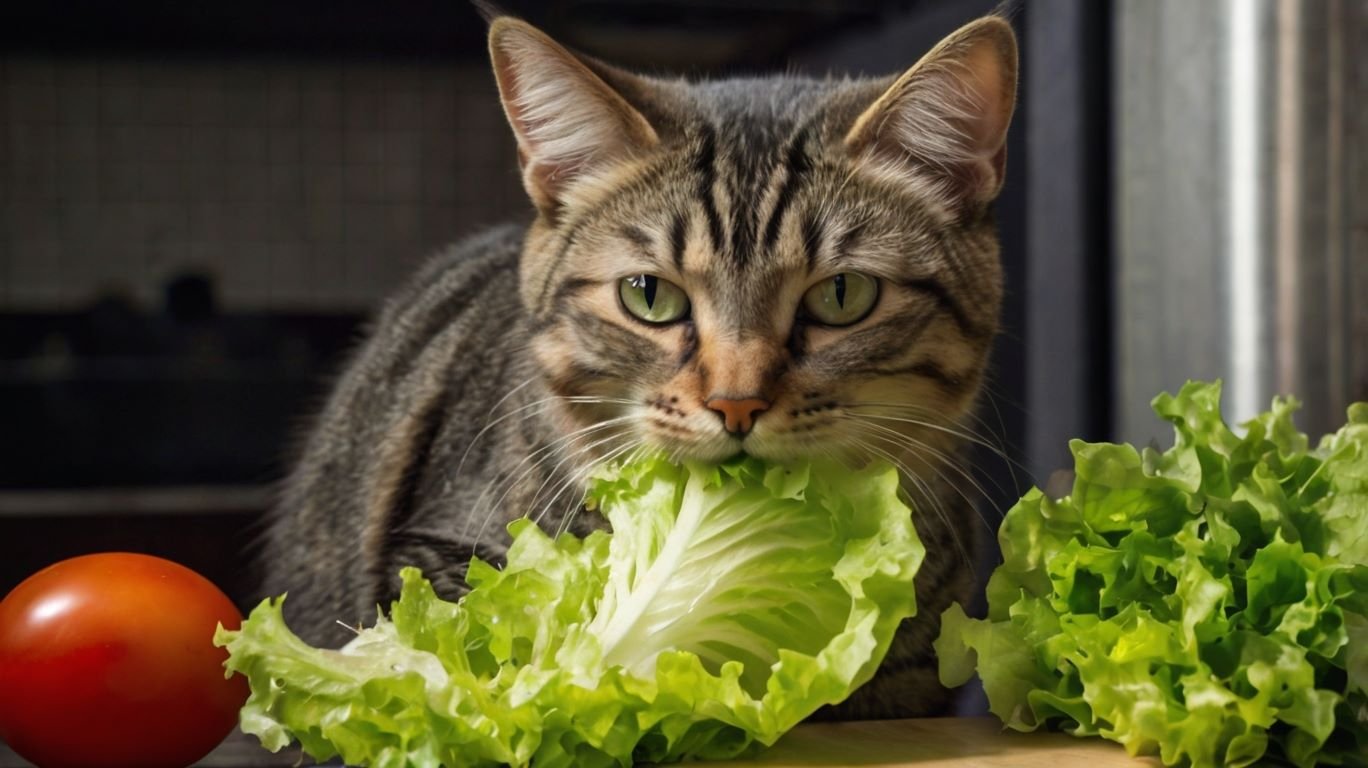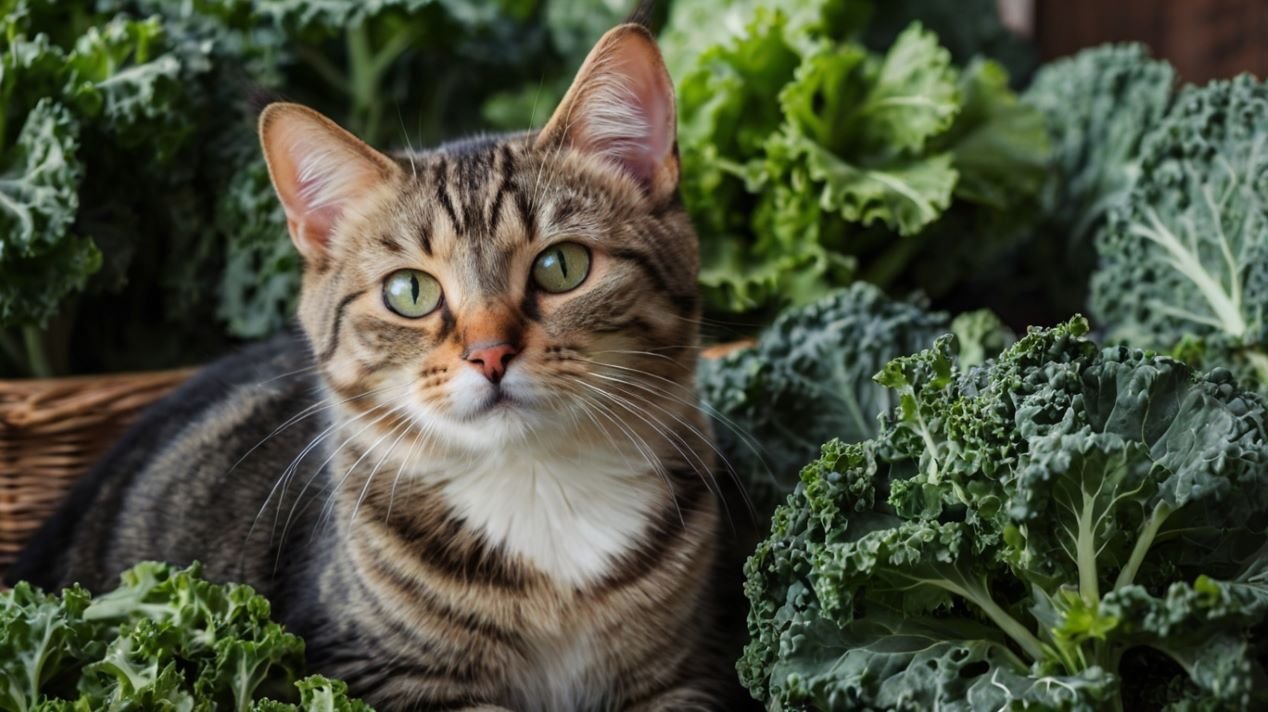Picture this: It’s Friday night. You’ve just settled into your favorite spot on the couch, cozy blanket draped over your legs, a bowl of warm, freshly popped popcorn nestled in your lap. As the movie’s opening credits roll, you feel that familiar presence – those eyes watching your every move. Your cat sits nearby, gaze fixed intently on your snack, maybe even reaching a tentative paw toward your bowl.
I can’t count how many times my orange boy Rio has done this during our movie nights! Those big pleading eyes make it nearly impossible to resist sharing. “Just one piece can’t hurt, right?” I often find myself thinking. But before you give in to those adorable eyes like I once did, let’s talk about whether popcorn is actually safe for our feline friends.
I’ve been down this road before – wanting to share my snacks with my cat and wondering if I’m helping or hurting him. Like most cat parents, I just want what’s best for my little buddy. That’s why I dug into the whole “cats and popcorn” question, and what I found might surprise you!
Table of Contents
What’s Really in That Popcorn Bowl?
Before we decide if popcorn belongs in kitty’s diet, let’s break down what’s actually in that bowl on your lap.
Popcorn starts as a special kind of corn kernel with a hard outer shell and a tiny bit of water trapped inside. When you heat it up, that water turns to steam, builds pressure, and – POP! – creates that fluffy white treat we all love.
If we’re talking plain, air-popped popcorn, it’s pretty simple stuff:
- A whole grain kernel
- Some natural plant oils
- A bit of fiber
- A touch of protein
- Carbohydrates
- A handful of vitamins and minerals
Not too scary, right? But here’s the thing – most of us don’t eat plain popcorn. We doctor it up with all sorts of yummy additions that make it much more complex:
- Melted butter (Rio can smell this from three rooms away!)
- Salt (sometimes lots of it)
- Sugar for those sweet varieties
- Cheese powder for the cheesy fans
- Various seasonings and flavorings
And these additions change everything when we’re considering sharing with our furry friends.
Also read, Can Cats Eat Rice?
Why Is My Cat So Obsessed With My Popcorn?
I used to wonder why Rio would practically climb into my popcorn bowl when he turns his nose up at so many other foods. If cats are meat-eaters by nature, why the fascination with this plant-based snack?
As it turns out, there are several perfectly normal reasons your cat might be eyeballing your popcorn:
The Fascinating Movement
Have you noticed how cats perk up at the crinkly sound of a bag? That sound triggers something primal in them – their hunting instinct kicks in big time. The rustling noise of reaching into a popcorn bag can be irresistibly intriguing to cats. And those kernels popping? Pure feline entertainment!
I once made the mistake of air-popping kernels with Rio in the room. He was so startled by the first pop that he jumped three feet in the air! After the initial shock, though, he couldn’t take his eyes off the popper as kernels flew around inside.
That Enticing Smell
While cats might not care much about plain popcorn, add some butter or cheese powder and suddenly it’s a different story. Our cats have around 200 million odor sensors in their noses (compared to our measly 5 million). That buttery aroma wafting through the house? It’s like a neon sign to your cat.
Rio seems to have a butter radar. The moment that distinctive smell hits the air, he materializes in the kitchen as if by magic, eyes wide and nose twitching.
The “I Want What You Have” Factor
Ever notice how a toy sits ignored for weeks until you pick it up? Then suddenly your cat finds it fascinating? Cats often want things simply because we have them. It’s a social bonding behavior – “If my human likes it, I should check it out too!”
Pure Feline Curiosity
Let’s face it – cats are the definition of curious. New textures, shapes, and objects naturally draw their attention. Popcorn’s light, airy texture might seem like the perfect batting toy to your cat. Those little white puffs practically beg to be swatted across the floor!
Plain Popcorn and Cats: The Real Deal

So here’s the million-dollar question: Can my cat safely eat plain popcorn? The answer isn’t as straightforward as we might hope.
In the strictest sense, plain air-popped popcorn without any toppings isn’t toxic to cats. You won’t find it on those lists of foods that are poisonous to our feline friends (like chocolate, onions, or grapes). But “not poisonous” and “good to eat” are two very different things!
Why Plain Popcorn Isn’t Ideal for Cats
I remember learning in a vet visit that cats are what’s called “obligate carnivores.” That fancy term simply means they’re built to eat meat, not plants. Their bodies aren’t designed for processing plant matter efficiently. Here’s why popcorn doesn’t fit well in a cat’s diet:
- Their Digestive System Works Differently Than Ours: Cats lack certain enzymes needed to properly break down plant materials. Their digestive tract is shorter than ours too, giving them less time to extract nutrients from plants.
- Not Much Nutritional Value: For all the space it takes up in their small tummies, popcorn offers almost nothing nutritionally valuable to cats. It’s essentially empty calories for them.
- Cats Process Carbs Differently: While we humans can get good energy from the carbohydrates in corn, cats’ bodies are designed to get energy primarily from proteins and fats.
- Missing Essential Nutrients: Cats need certain vitamins (like A, D, and taurine) that must come from animal sources. Plant foods like popcorn simply don’t provide these in forms cats can use.
Is a Piece of Plain Popcorn Going to Harm My Cat?
If your cat manages to snatch a piece of plain, air-popped popcorn with absolutely no butter, salt, or toppings, it’s unlikely to cause immediate harm to a healthy adult cat. But there are still some concerns to keep in mind:
- Choking Risk: Popcorn’s size and shape can present a choking hazard, especially for kittens or older cats.
- Tummy Troubles: Because cats aren’t built to digest corn well, even plain popcorn might lead to an upset stomach, gas, or discomfort.
- Filling Up on Empty Calories: Any popcorn in their belly means less room for the nutritious food they actually need.
- Those Pesky Un-popped Kernels: Hard kernels that didn’t pop can damage teeth or pose a serious choking risk.
- Possible Allergies: Though not common, some cats can have corn allergies, which might show up as itchy skin, ear infections, or digestive problems.
I learned this lesson the hard way with Rio. Even though he seemed fine after eating a piece of plain popcorn, I noticed he was a bit less interested in his dinner that night. That’s when I realized even “safe” human foods can disrupt their normal eating patterns.
The Dangers Lurking in Flavored Popcorn
While plain popcorn presents some concerns, it’s the flavored varieties that really raise red flags for our feline friends. Let’s break down why those tasty toppings spell trouble:
Butter and Oil – Too Much of a Good Thing
Most of us love our popcorn with a generous helping of butter or oil. For cats, however, these fatty additions can spell disaster:
- Digestive Distress: Cats’ systems simply aren’t designed to handle large amounts of fat all at once. The result? Often a messy case of vomiting or diarrhea.
- Pancreatitis Risk: This one’s serious. High-fat foods can trigger painful inflammation of the pancreas in cats. I’ve seen a friend’s cat suffer through pancreatitis after getting into fatty food, and it was heartbreaking – not to mention expensive to treat.
- Unwanted Weight Gain: Those extra fat calories can quickly contribute to obesity in cats. And just like in humans, carrying extra weight leads to all sorts of health problems for cats.
I made the mistake of giving Rio a tiny bit of buttered popcorn once. The sad looks he gave me the next day while dealing with an upset tummy taught me a powerful lesson about being more careful with human foods.
Salt – A Little is Too Much
That sprinkle of salt that makes popcorn so addictive for us can be genuinely dangerous for our cats:
- Sodium Ion Poisoning: This sounds scary because it is. Cats need only a tiny amount of sodium in their diet, and too much can lead to serious problems including:
- Excessive thirst and urination
- Vomiting and diarrhea
- Tremors
- Seizures
- In severe cases, even death
- Making Dehydration Worse: Many vets will tell you that cats typically don’t drink enough water as it is. Salty foods increase thirst and can worsen existing dehydration issues.
- Heart and Blood Pressure Problems: Just like in humans, excess salt can contribute to high blood pressure in cats, especially those with kidney issues.
I once watched my friend’s cat after he got into some salty snacks. The poor thing was drinking water constantly and making frequent trips to the litter box. It was a clear warning sign that salt and cats don’t mix well.
Cheese and Dairy Toppings – Not a Kitty’s Friend
Cheese popcorn might seem like something cats would love (after all, cats and milk are a classic pairing in stories), but the reality is quite different:
- Lactose Problems: Most adult cats are actually lactose intolerant. They don’t produce enough of the enzyme needed to digest milk sugars properly.
- Uncomfortable Aftermath: Dairy often causes gas, bloating, diarrhea, and general discomfort in cats who can’t process lactose.
- Extra Problematic Ingredients: Cheese popcorn typically contains even more salt and artificial flavors that can be harmful.
Sweet Varieties – Not So Sweet for Cats
Those caramel and kettle corn varieties pose their own set of problems:
- Sugar Isn’t Natural for Cats: Here’s something fascinating – cats can’t even taste sweetness! Their taste buds lack the receptors for sweet flavors, which makes sense when you consider they evolved to eat meat.
- Dental Disasters: Sticky sweet toppings can adhere to teeth and lead to dental problems. Cat dental work is both expensive and stressful for everyone involved.
- More Weight Issues: Extra sugar means extra calories, potentially leading to obesity.
- Diabetes Concerns: While not directly causing diabetes, unnecessary sugars certainly aren’t helpful for cats, especially those already predisposed to the condition.
Those Mystery Ingredients in Packaged Popcorn
Pre-packaged popcorn varieties come with another whole set of concerns:
- Artificial Butter Flavoring: Those butter-flavoring chemicals haven’t been tested for cat safety.
- Preservatives Galore: Various preservatives might cause sensitivity reactions in some cats.
- Hidden Dangers in Seasonings: Many spice blends contain onion or garlic powder – both toxic to cats even in small amounts.
Microwave Popcorn – A Special Category of Concern
Microwave popcorn deserves special attention because it combines so many potential issues:
- Chemical Coatings: The bags used for microwave popcorn have special chemical coatings that release during heating. We don’t even know all the effects these might have on humans, let alone our more sensitive cats.
- Extra Fatty: Microwave popcorn typically contains more oils and fats than air-popped versions.
- Artificial Flavors Concentrated: The butter flavoring in microwave popcorn is particularly potent.
- Salt Overload: Most microwave popcorn contains significant amounts of salt.
- Burn Risk: Fresh microwave popcorn contains very hot oils that could seriously burn a curious cat’s mouth or tongue if they try to sneak a piece right away.
I’ve completely switched to air-popped popcorn at home, partly for my own health but also because I worry about Rio being exposed to those microwave popcorn chemicals even just through the air.
Help! My Cat Ate Some Popcorn – What Now?

It happens to the best of us – you look away for just a second, and your sneaky kitty has nabbed a piece (or several) of popcorn. Here’s what you should do:
If Your Cat Snagged Plain Popcorn
For a small amount of plain, air-popped popcorn:
- First, make sure they’re not choking
- Keep an eye out for any tummy troubles over the next day
- Make sure they have plenty of fresh water available
- No need to panic or call the vet unless symptoms develop
If They Got Hold of Flavored Popcorn
For buttered, salted, or otherwise flavored popcorn:
- Watch more carefully for signs of digestive upset
- Monitor water intake and bathroom habits closely
- Call your vet if your cat shows symptoms like vomiting, diarrhea, unusual lethargy, or excessive thirst
- For large amounts of heavily seasoned popcorn, it’s better to call your vet right away for advice
Red Flags That Mean “Call the Vet Now”
Reach out to your veterinarian immediately if you notice:
- Repeated vomiting or diarrhea
- Refusing to eat for more than 24 hours
- Signs of pain (hiding, crying, aggression when touched)
- Excessive drinking or urination
- Unusual lethargy or weakness
- Tremors or strange behavior
When Rio once got into some salty snacks (not popcorn, but similar concerns), I called our vet right away. She walked me through what to watch for and when to bring him in. That peace of mind was worth the call, even though he ended up being fine.
Better Alternatives – Snack Time with Your Cat
I get it – part of the fun of snack time is sharing the experience with everyone you love, including your furry family members. Here are better ways to include your cat in snack time:
Cat-Specific Treats
The safest option is sticking with treats made specifically for cats:
- They’re formulated with feline-appropriate ingredients
- They meet your cat’s unique nutritional requirements
- They come in textures and flavors cats actually enjoy
- They’re properly sized for a cat’s small mouth
Just remember that even proper cat treats should make up no more than 10% of your cat’s daily caloric intake.
Cat-Safe Human Foods for Occasional Sharing
If you really want to share human food occasionally, these options are much safer than popcorn:
- Tiny Bits of Plain Cooked Chicken or Turkey: Skip the skin, bones, and all seasonings, especially onion and garlic.
- Small Pieces of Cooked Egg: This is actually a good protein source that many cats enjoy.
- Little Tastes of Plain Cooked Fish: Avoid raw fish and be extra careful to remove all bones.
- Freeze-Dried Meat Treats: These preserve the nutrition of meat in a convenient, shelf-stable form.
Rio goes absolutely wild for small pieces of plain chicken. His eyes light up more for that than they ever would for popcorn! It’s become our special movie night ritual – I get my popcorn, and he gets a few tiny pieces of chicken. Everyone’s happy and healthy.
DIY Cat Treats for the Win
If you enjoy cooking, you can make simple cat treats at home:
- Bake small pieces of chicken or fish until fully cooked but still moist
- Freeze tiny portions of plain yogurt (if your cat tolerates dairy)
- Make frozen chicken broth cubes (just be absolutely sure the broth has no onions, garlic, or salt)
Understanding Your Cat’s Nutritional Needs
When thinking about sharing treats like popcorn, it helps to understand what your cat’s body really needs:
What “Obligate Carnivore” Really Means
This scientific term simply means cats must eat meat to survive and thrive. Their bodies require:
- Animal proteins (they can’t get adequate protein from plants)
- Taurine (an amino acid found only in animal tissues that cats can’t make themselves)
- Vitamin A in its preformed state (from animal sources)
- Arachidonic acid (a fatty acid found in animal fats)
Plant foods simply don’t provide these essential nutrients in forms cats can use. Their bodies aren’t designed to convert plant nutrients the way ours can.
A Balanced Diet for Your Cat
A proper cat diet includes:
- High-quality animal proteins (meat, fish, poultry)
- Moderate amounts of fat
- Minimal carbohydrates (they don’t need many)
- Proper vitamin and mineral balance
- Adequate hydration (wet food helps with this)
Commercial cat foods are carefully formulated to provide this balance. When we add human snacks like popcorn, we risk disrupting this calibrated nutritional profile.
The 90/10 Rule to Live By
Our vet introduced me to the 90/10 rule, and it’s been super helpful:
- 90% of calories should come from balanced cat food
- Only 10% should come from treats of any kind
This simple guideline helps ensure treats don’t displace nutritious food or lead to weight gain.
Why Your Cat Begs (And How to Handle Those Pleading Eyes)
Understanding why cats beg can help you respond in healthier ways:
The Psychology Behind the Begging
- Natural Curiosity: Cats are hardwired to investigate new things in their environment.
- It’s Really About Attention: Sometimes the begging isn’t about food at all – it’s about getting your focused attention.
- You Taught Them This Works: If begging worked even once before, they’ll definitely try again!
- Some Foods Really Do Smell Good to Cats: Certain human foods truly do have appealing aromas to cats.
Better Ways to Handle the Begging
- Stay Strong: I know those eyes are hard to resist (believe me, Rio has perfected the art!), but sharing inappropriate foods only teaches cats to beg more persistently.
- Offer Something Better: When Rio starts eyeing my snacks, I redirect with a cat-appropriate treat or a favorite toy.
- Stick to Feeding Routines: Regular mealtimes help reduce begging behavior.
- Keep Them Engaged: Bored cats may beg more, so make sure they have plenty of mental and physical stimulation.
Creating Healthy Snacking Habits Together
Here are some tips I’ve learned for building better snacking habits with your cat:
- Prepare in Advance: I keep a small container of cat-safe treats ready for movie nights so when I reach for my popcorn, I can give Rio his own special snack.
- Sync Your Snack Times: If you always snack during certain activities, give your cat their treat at the same time so they feel included.
- Create Separation: I feed Rio his treats away from where I’m eating to avoid reinforcing the connection between my food and his treats.
- Get Everyone on Board: Make sure all family members follow the same rules about not feeding human food to cats, or your training efforts won’t work.
When movie night comes around now, Rio knows he gets his special chicken treat while I enjoy my popcorn. He’s stopped begging for my snacks entirely because he knows he has something better coming his way!
Loving Your Cat Means Making Tough Choices
As cat parents, we have some important responsibilities:
- Health Advocate: Our cats depend on us completely to make good health choices for them. They can’t read articles about feline nutrition or understand the risks of certain foods.
- Do Your Homework: I’ve made it a habit to always check if foods are safe before sharing them with Rio. Better safe than sorry!
- Partner With Your Vet: When in doubt, I ask our vet. She can provide advice specific to Rio’s health needs and age.
- Stay Strong Against Those Eyes: No matter how cute they look when begging (and trust me, Rio has mastered the art), remember that what seems like kindness in the moment might actually harm your cat in the long run.
Sometimes the most loving choice is saying no, even when those big eyes are pleading for a taste of your snack.
Conclusion – The Popcorn Verdict
So, can cats eat popcorn? While plain, air-popped popcorn isn’t immediately toxic to cats in tiny amounts, it offers no nutritional benefits and comes with several risks. Flavored popcorn with butter, salt, cheese, or other toppings presents even greater dangers.
The most loving choice is keeping the popcorn for yourself and offering your cat treats made specifically for their health and enjoyment. Your cat may look longingly at your snack (I know Rio still gives my popcorn bowl the occasional curious glance), but you’re being a responsible pet parent by saying no.
I’ve learned that showing love to our cats isn’t about sharing everything we enjoy. It’s about making choices that keep them healthy and happy for years to come. These days, our movie nights are better than ever – I enjoy my popcorn guilt-free, and Rio enjoys a treat that’s good for him. Both of us are happier and healthier for it!
What about you and your cat? Have you found good alternatives to sharing your human snacks? However you handle snack time, remember that the best treat you can give your cat is making choices that protect their health and wellbeing.

Shahriar Robin is the creator of WhatPetsCanEat.com, a passionate pet lover and dedicated cat dad to Rio, a curious two-year-old orange feline who inspired this website. With a love for animals and a knack for research, Shahriar shares trusted, easy-to-understand information to help fellow pet owners make safe, healthy food choices for their furry friends.


